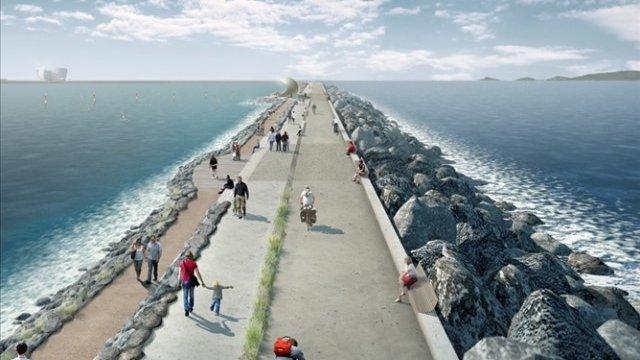How Swansea's tidal lagoon would help the economy
- Published
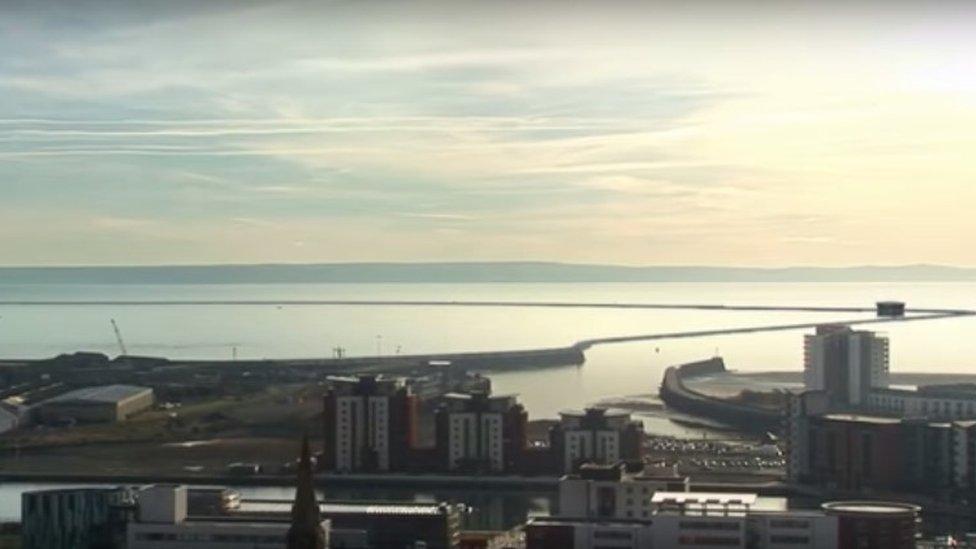
Artist's impression of the lagoon across Swansea Bay
An independent review into tidal lagoon energy in the UK has been completed - and now the UK Government is expected to decide by the end of the year whether the industry has a future, including a crucial first step in Swansea Bay.
If this form of renewable energy is supported, it could signal the dawn of a new industrial era, worth £15bn to Wales and the UK.
Those behind the new manufacturing and energy sector believe it can deliver sustainable, locally-produced electricity for about a hundred years.
Alongside this, a wealth of knowledge would build-up that could be exported around the world.
The plan would be for the first lagoon in Swansea Bay to be a prototype and the smallest.
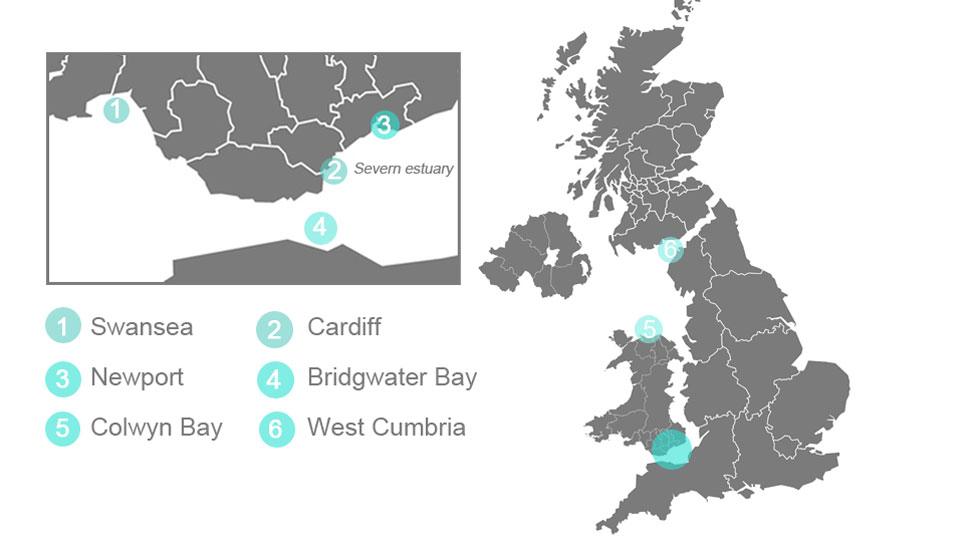
That would then be followed by lagoons in Cardiff - east of where Cardiff Bay is now - Newport, Bridgwater Bay, Colwyn Bay and west Cumbria, north of Workington.
That is Tidal Lagoon Power (TLP's) dream.
Former UK Energy Minister Charles Hendry has been gathering evidence for nine months for his inquiry, including visits to all the potential sites and discussions with industry. Now the wait for his conclusions is intensifying.
The Swansea Bay lagoon would cost about £1.3bn; the company has promised that half that money would be spent in Wales.
Mark Shorrock of Tidal Lagoon Power says the industry has the potential to be worth billions
So what sorts of Welsh businesses would be involved? The most obvious are civil engineering companies.
Monmouthshire construction firm Alun Griffiths Construction is already contracted to work delivering some of the roadways, while Andrew Scott Civil Engineering of Port Talbot is watching keenly.
They plan to bid for some of the marine work contracts that would be put to tender if the conclusion of the Hendry review marks the go-ahead.
General Electric and Andritz Hydro have between them a £300m contract for the 16 turbines that would be used in Swansea Bay.
The plan is that the final turbine assembly would be carried out locally.
Alongside that there will be work for companies involved in fabricated metals, steel casting and forging, and power electronics.
The chief executive of TLP Mark Shorrock said: "We certainly think we'll be creating direct employment of 1,900 in Swansea. That ignores the supply chain.
"As we go through that, we see carpenters, electrical engineers and then there's an awful lot of steel in generators and turbines."

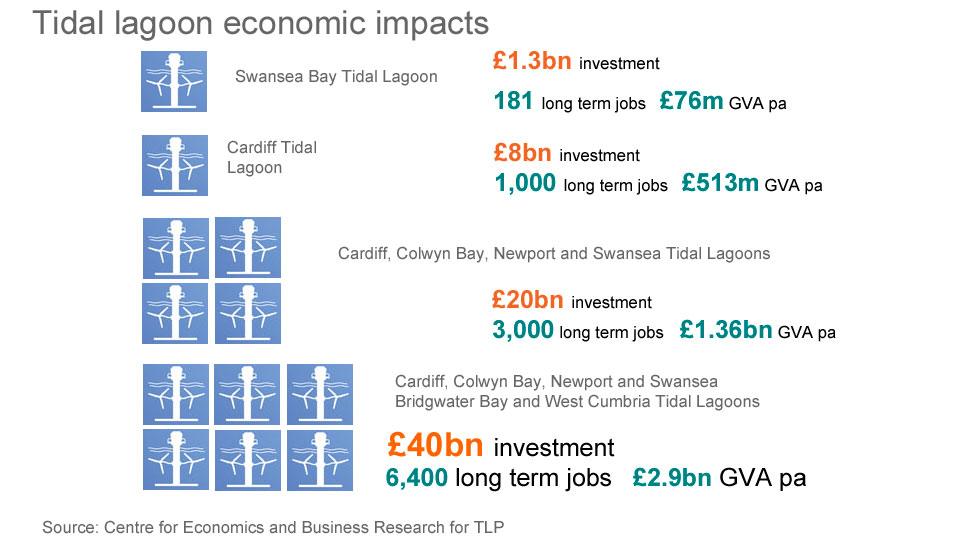

If the Swansea Bay project gets the go ahead, TLP will then speed up its preparatory work on larger tidal lagoons in Cardiff, Newport and Colwyn Bay.
Each site will also need the same skills but on a greater scale.
The estimate is that four tidal lagoons in Wales could support 33,500 jobs during the construction and more than 3,000 when they are in operation.
They could be worth £1.3bn a year in Gross Value Added (GVA), the measure of just how much a contribution sector or industry makes to the economy.
Mr Shorrock said there was the potential for Wales to become the industry base for exporting mass-produced turbines, generators and engineering around the world.
Cost of power
The other side of the coin is the cost of the electricity generated by tidal lagoons. It has been described by politicians as "expensive" referring to the guaranteed price - or strike price - that TLP is asking from the UK government.
TLP forecasts that its lagoons would generate power for 120 years and is seeking a 90 years contract at £89.90 per mega watt hour (MWh)
That would be below the £92.50 per MWh agreed for the new Hinkley C nuclear power station.
Swansea is the test lagoon but it is small.
TLP argues that lagoons after that will be bigger and more cost-efficient - and they are designed to last 120 years, 30 years beyond the subsidy and longer than nuclear power plants and offshore wind generators.
Comparing costs of electricity is complicated and can be controversial. The wholesale electricity market in the UK can be volatile. It can change in the hour and day.
For instance according to the energy brokers Energy Solutions during the day on 21 October, the wholesale electricity price in the UK was £77.84 Mwh.
Within two days it was down to £44.57 and another day later it had reached £107.11.
The price being asked for by TLP is not linked to the consumer price index and so in real terms reduces with inflation.
In practice its very difficult to compare the costs of varying energy sources and different generations of power stations.
For instance, the pricing of electricity from both Hinkley C and tidal lagoons also includes building costs.
Whereas the price of electricity from older power stations is more like housing costs after the mortgage has been paid off. In other words, operators of these do not have to worry about paying any interest.
There is also the thorny question of the comparative ongoing cost of dealing with waste.
Consumers' bills?
So what do politicians and others mean when they say that it is an expensive form of low carbon electricity generation?
Citizens Advice gave evidence to Hendry's review. It says electricity bills to households will not go up from tidal energy but the organisation is concerned that subsidising lagoons could be take away help to other more established, renewable energy projects.
In simple terms, Citizens Advice believes that if the argument for tidal lagoons is an economic one, concentrating on job creation, then it could be paid for by taxation or a government loan, rather than through energy bills.
Andy Regan, Citizens Advice Cymru's energy specialist, said: "The subsidies are paid for with a levy on energy bills - it's a fixed pot and you want to get as much decarbonisation as you can for what consumers are paying."

Leading the review is Charles Hendry, a former energy minister
The Hendry review is completed and due to be handed to the UK government.
While Mark Shorrock of TLP is feeling "pretty good about it", it is not known what Hendry's conclusions are or whether ministers will agree.
Ultimately the UK Government will have to decide whether generating electricity from the tides is an economically and environmentally sustainable way to produce low carbon energy for the future.
- Published7 November 2016

- Published2 December 2014
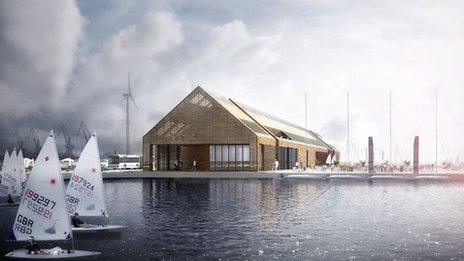
- Published11 October 2016
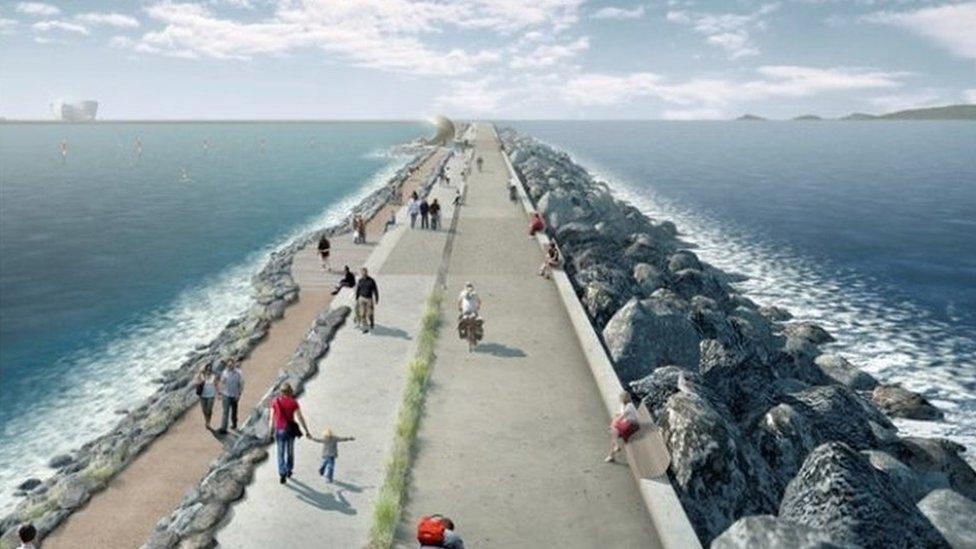
- Published15 October 2015

- Published15 January 2016
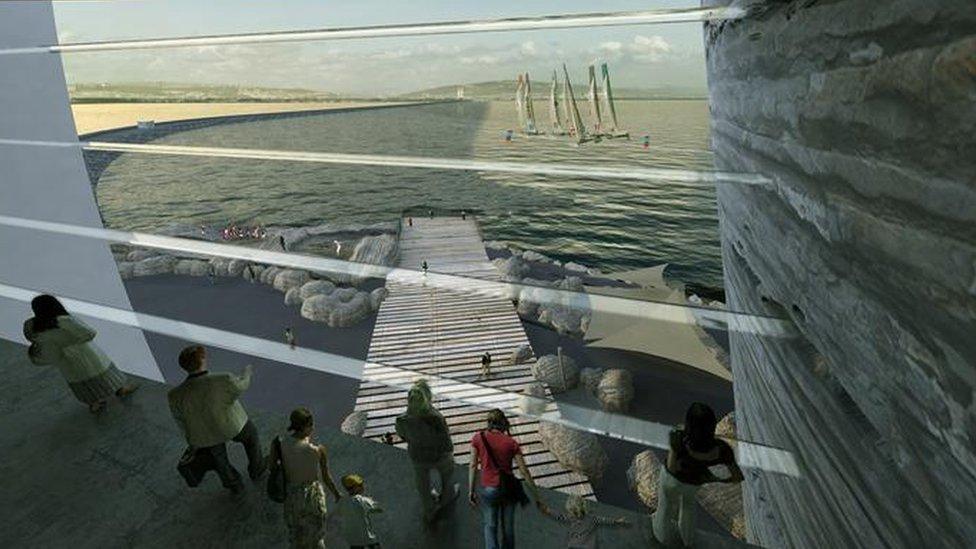
- Published6 February 2015

- Published28 July 2016
